|
Beet Salad in Dijon vinaigrette
Ingredients
:
5 beets
For the Vinaigrette:
1 tablespoon Dijon mustard
2 tablespoons sherry vinegar
2 tablespoons lemon juice
¼ cup olive oil
Salt and pepper to taste
For the salad:
4 cups very thinly sliced red cabbage
1 cup chopped red onion
8 ounces mixed baby greens
1 cup chopped pistachios
1 cup fresh blueberries
4 oz feta
Put 5 beets in large pot of boiling water. Cover and simmer for 1 hour. When cool, peel away skin with fingers and cut the beets into bite sized cubes. Beets can be prepared 2 days ahead and refrigerated.
In a small bowl, combine the vinaigrette ingredients together and mix well.
Make the salad: Combine the cabbage, beets and red onion with half the vinaigrette and set aside for an hour. Toss beet mixture with baby greens and the remainder of vinaigrette. Top with feta and pistachios.
|
|
|
|
| |
|
Stop regarding clover as a lawn weed; consider it as a lawn - a dream lawn, in fact. Lush, drought-tolerant and pest-free, clover creates a lawn that requires less cutting, little watering and no feeding. This means lighter work for the gardener and fewer pesticides to harm the environment. In addition, clover has nodules on its roots that slowly release nitrogen, enriching the soil and making fertilizer unnecessary. Planted alone or blended with grass, clover forms an even, weed-smothering green expanse tough enough to withstand child's play and it won't turn brown if your dog pees on it. Dutch white clover, which (be warned!) attracts bees when it flowers, is the most common variety.
Across the country, native pollinators have been dying for many years, primarily because we have replaced so much of their once diverse natural habitat with vast swaths of monoculture: acres and acres of a single crop, many of which-corn and wheat, for instance-are poor sources of the pollen and nectar insects eat. Likewise, I recently learned, weed-free flowerless grass lawns are monoculture in microcosm; they, too, are wastelands for pollinators, offering no nourishment of any kind. We associate a lush green lawn with vitality, but in many ways a grass lawn is the most sterile part of a garden.
Ultimately, however, the consequences of our obsession with pristine grass lawns may undercut any benefits. In addition to depriving both native pollinators and honeybees of wild habitat and food-and thereby threatening our agricultural system-lawn care guzzles water, spews smog and soaks the earth in potentially harmful chemicals.
In exchange for nutrients, bacteria living in the roots of white clover and other plants absorb nitrogen from the air in soil and convert it into ammonia and nitrate, which plants use to build DNA and many other cell parts. When a white clover plant and its bacteria die and decompose, nitrogen returns to the soil. Twenty five percent more pollinating insects visit the diverse lawns compared to typical lawns and far more types of insects come in general.
To sow clover alone, mix it with enough sand to facilitate spreading. About 2 ounces of clover is needed for every 1,000 square feet of lawn.
Commonly available clovers are Dutch White, Yellow Blossom and Red Clover. Of these, Dutch White is best suited for lawn-type use. Yellow Blossom and Red Clover grow taller, from 18 - 36".
- White clover (Trifolium repens) is a rapid spreader that crowds out broadleaf weeds while it grows harmoniously with grass. It will thrive in areas that are poorly drained or too shady for a conventional lawn.
- Being a legume, clover has the ability to convert nitrogen into fertilizer using bacteria in its root system, practically eliminating the need for additional fertilization.
- It is an extremely drought-resistant plant and will keep its cool-green color even during the hottest and driest parts of summer.
- Left uncut, white clover grows 4-8 inches tall and produces small white flowers that are often tinged with pink. The flowers not only create a lovely fragrance, but also bring in bees, butterflies, and beneficial insects that prey on garden pests.
- Honeybees rarely sting when they are away from their hive, but if they make you uncomfortable or you are allergic to bee stings, simply mow the lawn more often when clover is in bloom.
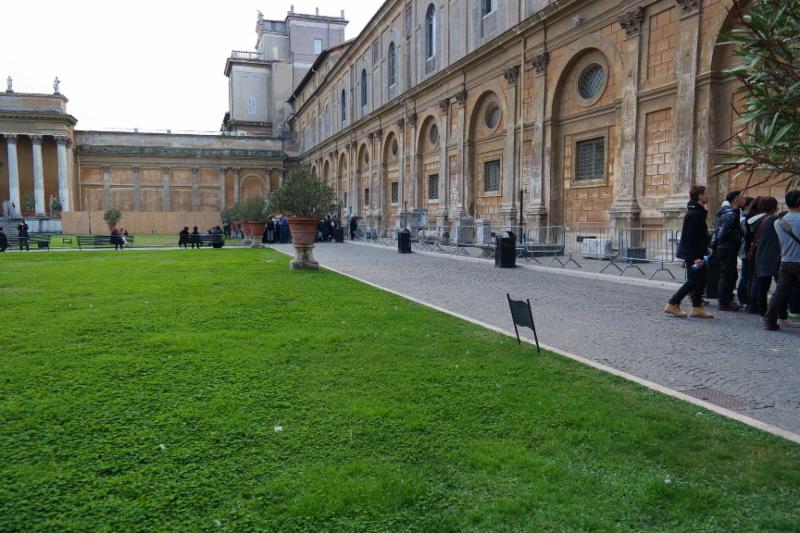
The lush clover lawn at St. Peter's Square, Vatican City.
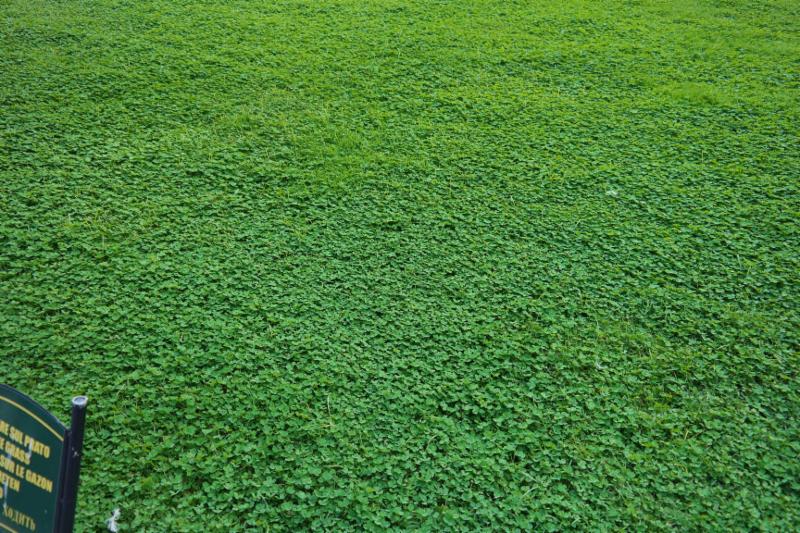
A close-up of the lawn at St. Peter's Square Vatican City, clover predominates.
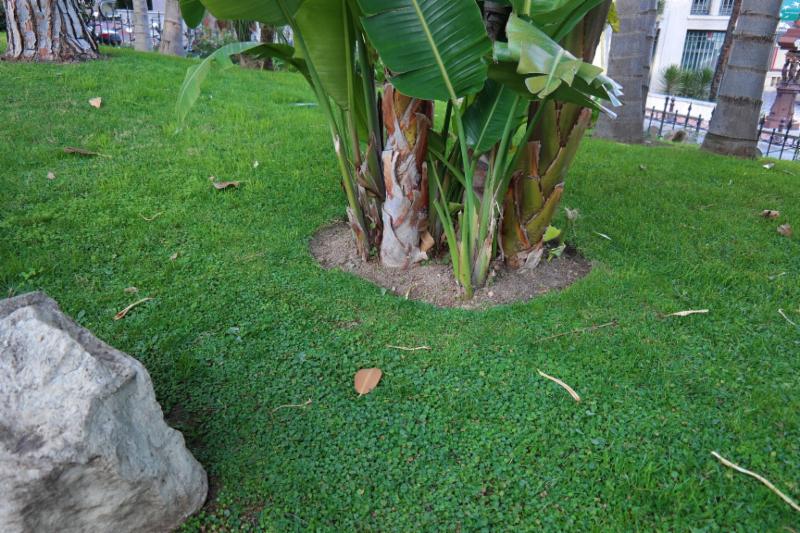
The clover lawn at the botanical garden Jardin Exotique de Monaco, located on a cliffside in Monaco.
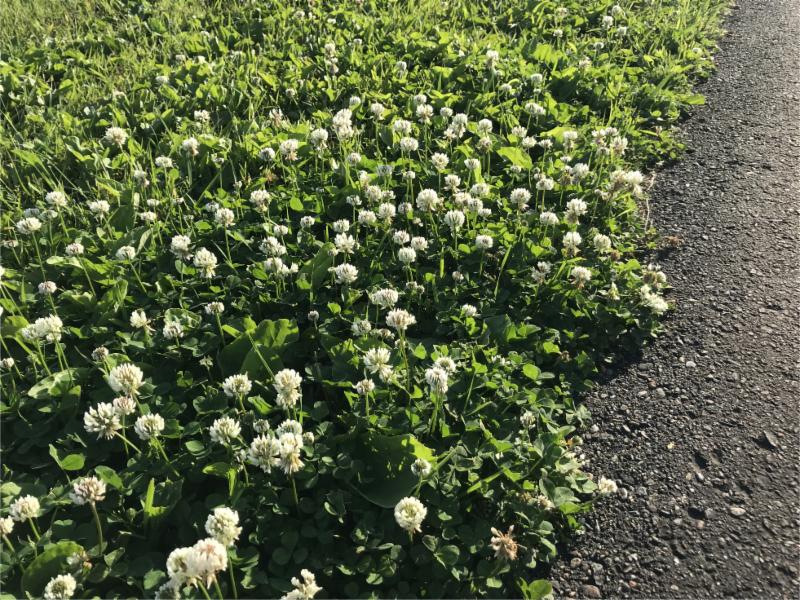
Dutch white clover looking healthy in a tough urban site.
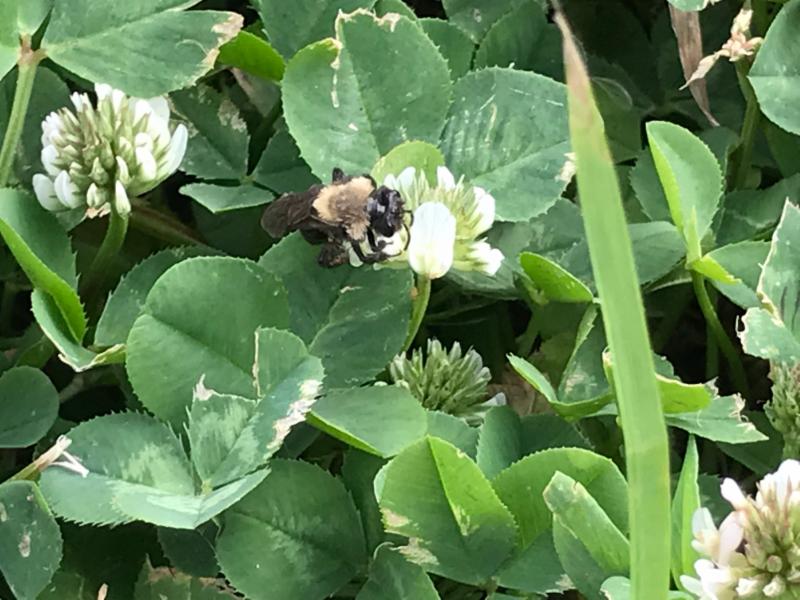
Give bumble bees the food they adore...the clover flower.
For more information on
establishing Clover in lawns
|
|
According to the NOAA, May 2019 was the second-wettest month ever observed, nationwide. Historic rains created a muddy mess for farmers across the Midwest, stalled barges on the Mississippi river and pushed historic floods into communities along bloated rivers that have never flooded before. What happens to the trees that are under water?
Oxygen in flooded soils is quickly used up by roots and microorganisms. Some oxygen can diffuse down through the waterlogged soil but this is usually enough to keep the top few inches of soil oxygenated. Below that the soil is devoid of oxygen. Woody roots can survive such conditions for some time when in a dormant state but fine roots die quickly, leading to poor water and mineral uptake, wilting of leaves and reduced photosynthesis. How long can trees survive flooding before they die?
Fortunately for most trees, the prospect for survival and continued growth is good. Even flood-sensitive trees will escape injury if flood waters recede in seven days or less. But, if flood waters cover roots of sensitive trees for longer periods, injury symptoms such as leaf chlorosis (yellowing), downward curling of leaves, leaf drop, and branch dieback may occur. And in a few extreme cases, entire trees may die. As a general rule, broadleaved trees tolerate flooding better than conifer species, middle-aged trees tolerate flooding better than young or old trees, and flooding in the growing season is worse than dormant season flooding.
Trees vary tremendously in their ability to tolerate flooding. Species classified as being flood-tolerant can survive several months and up to two growing seasons with their roots completely submerged. These include: boxelder, alder, willow, silver maple, green ash, eastern cottonwood and bald cypress. Some flood tolerant species produce new (adventitious) roots on the submerged part of the stem up near the water surface where there is more oxygen.
Moderately flood-tolerant species that have actually survived an entire growing season of flood conditions include mulberry, hackberry, red maple, honeylocust, river birch, elm and sycamore.
Some of the more common species grown in Minnesota are sugar maple, Norway maple, basswood, Kentucky coffeetree, black locust, black cherry, black walnut, oak, buckeye, crabapple, pines and spruces. Researchers have found these species suffer severe injury or die if flood waters persist over their roots for one month or less. Flood waters will eventually recede but soils will undoubtedly remain wet for a long time. Saturated, poorly-drained soils may pose the greatest hazard for trees, particularly if this waterlogged condition persists for an extended period. Warm, dry weather is the only cure for these chronic and potentially deadly soil conditions. Sensitive trees along the Mississippi River will probably be pushed to their limit as flood waters are predicted to persist for quite some time. Climate projections indicate that it will be wetter in the decades ahead than it is now, and that heavy rains will continue increasing into the future.
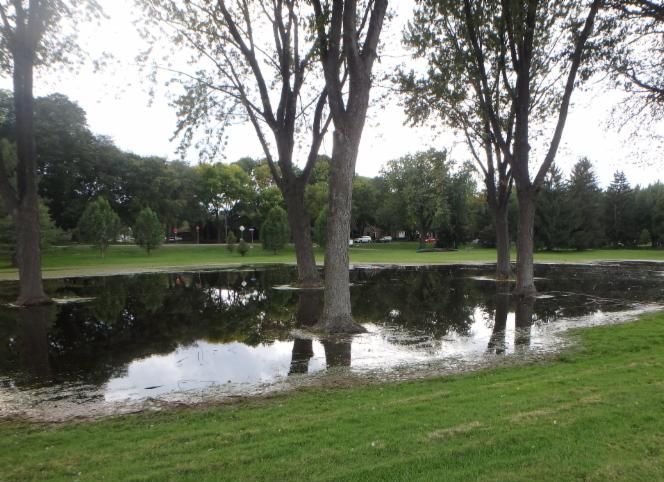
Stagnant water is usually more damaging than flowing water. Flowing water has turbulent surface mixing and internal flows that move oxygen more effectively to root surfaces than standing water.
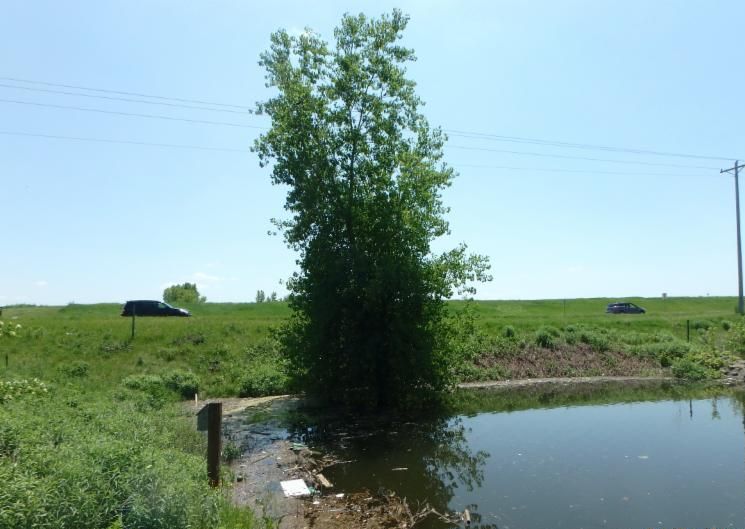
Cottonwood, a remarkable survivor of wet soils.
Water on the trunks is considerably more harmful than water just covering the roots, so a good rule of thumb is the higher the water the greater the injury.
Flooding in late winter, while the tree is dormant, is the least harmful.
|

Thanks for reading.
Happy Planting!
Faith Faith Appelquist President & Founder
|
|
|